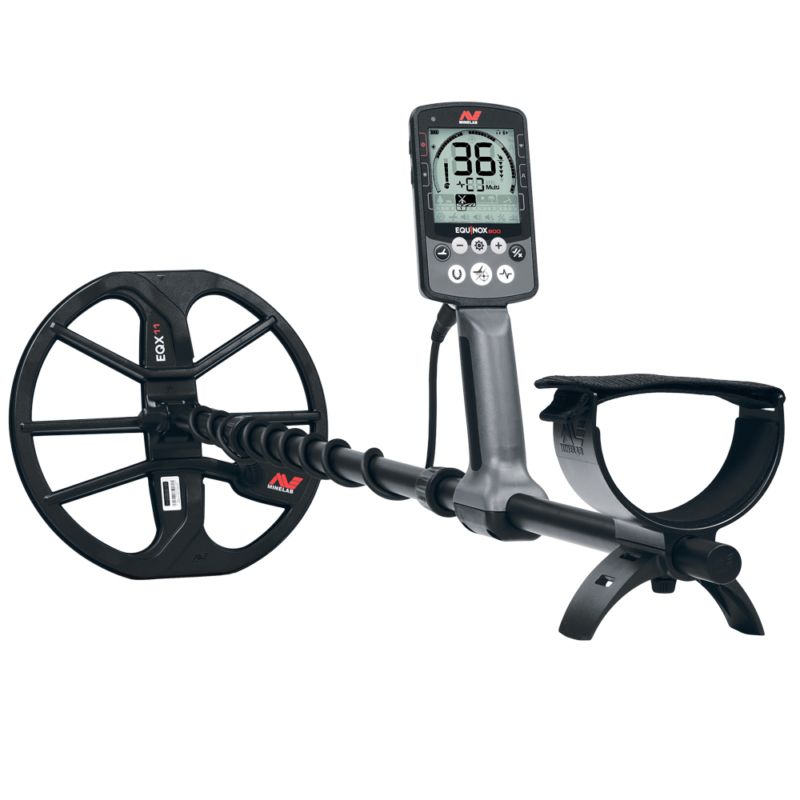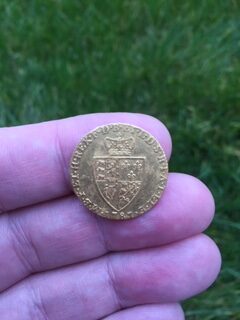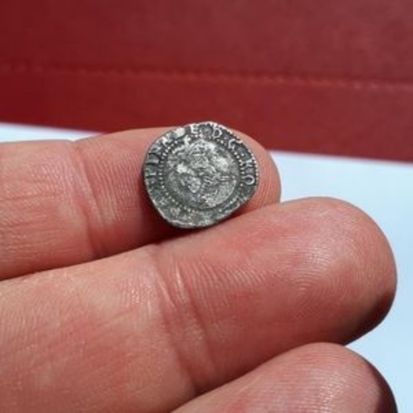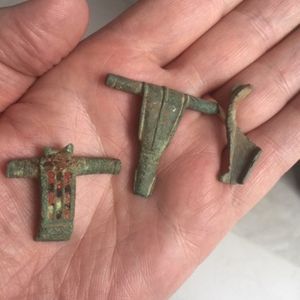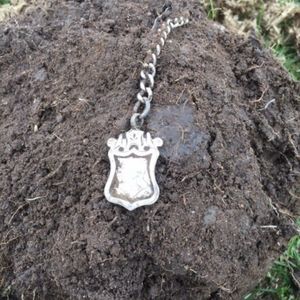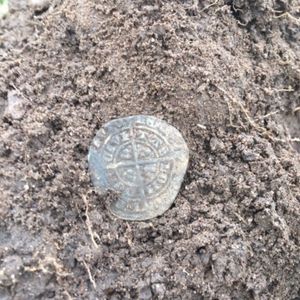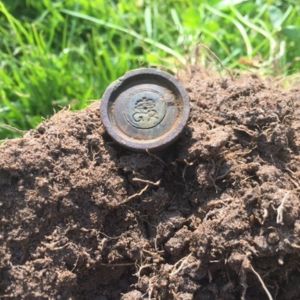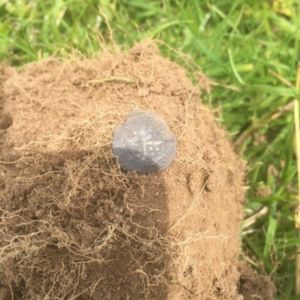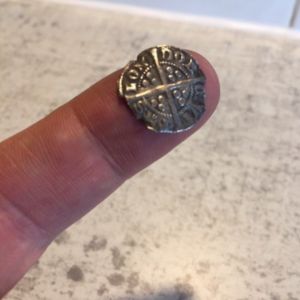What is a multi frequency metal detector?
A multi frequency metal detector as it’s name suggests uses several different frequencies measured in Kilohertz to pass through soil, as opposed to a single frequency metal detector that uses only one frequency.
The advantages of multi frequency operation are increased detecting depth and ground stability along with increased target identification accuracy.
How does a metal detector work?
A metal detector basically works by generating a stable electromagnetic field around a search coil by energising a tightly wound copper wire with a power source, normally batteries in our case.
When the search coil and passes over a metallic object, the electromagnetic field “energises” the metallic object and causes it to “jiggle”.
This disrupts the stable magnetic field around the search coil and causes the metal detector to give you a signal…hey presto, you’ve found your target! Here’s the clever part.
Because different metals have different characteristics like conductivity, resistivity and permeability (ability to be magnetised), the metal detector can carry out some really complicated mathematics by using the information from the electromagnetic field and information from the jiggling object.
This is how a metal detector tries to determine what type of metal it thinks you have under the search coil.
What is the best frequency for a metal detector?
This question has always been the holy grail in the metal detecting world.
So, armed with the knowledge we’ve talked about above, we know how a metal detector works, we know that different metals have different characteristics.
We also know that a metal detector carries out some complicated calculations to help determine the metal type.

So how does it determine what metal it thinks is under the search coil and what is the best frequency for a metal detector?
Well, metal detecting frequencies are measured in Kilohertz and depending on the frequency, all frequencies have a different effect on a target type.
(I go into this in slightly greater depth in my article about metal detector discrimination and metal conductivity here)
Typical metal detector frequencies range from 3 KHz and go up to maybe 40 KHz. Some specialised machines operate beyond these ranges but the hobby metal detectors usually lie in this range.
Physics dictates that the lower frequencies travel further into ground and react better to bigger, thicker targets. Higher frequencies tend to perform better on smaller, thinner targets but they don’t penetrate the ground as deep.
You often here of lower frequency machines being able to detect deeper solid silver larger coins and having the ability of recognising iron better the higher frequency machines.
Similarly, you’ll hear of higher frequency machines being better at finding smaller, thinner sectioned coins in amongst iron. You can further read my article on metal detector depth here.

Unbeatable Multi Frequency!
You can now get the ultimate power of multi frequency technology over single frequency detectors with the Minelab Vanquish range of detectors.
The entry level Vanquish 340 now gives you ultimate depth, stability and sensitivity on all target types in every soil, including wet beach sand.
Because of this, many manufacturers of single frequency machines tend to choose an operating frequency that sits in roughly the first third of the range.
This typically could be either 8 KHz, 12 KHz or 14 KHz. Some older machines operated at 3 KHz. Other machines that maybe have “Gold” in their names would be a more specialised machine operating at the higher end of about 40 KHz which is great for finding small gold.
So, we are gaining a lot more knowledge now about how metal detectors work, about different metals and how they react to a metal detectors operating frequency.
There is just one more thing to throw into the mix. The operating single frequency will also have a bearing on how the metal detector will handle any ground mineralisation and deeper targets.
Because only a limited amount of information can be deduced from one frequency, the detector can only calculate with what its given and will, “interpret” what it can giving you a best guess on your target ID.
This can manifest itself in smaller, thinner targets like medieval hammered silver coins at greater depths being mistaken for iron.
Because of the reduced incoming information and the detector trying to compensate for any difficult ground conditions, a smaller, thinner target at depth can elude some detectors because its target signature gets pulled down more into the iron range as its depth increases.
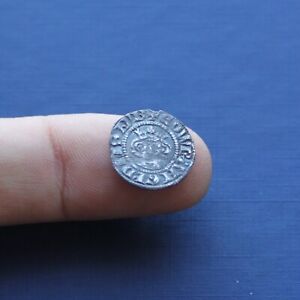
True story…..this happened to me on a club dig once.
I had my Minelab Equinox 800 which is a multi frequency machine and several other club members had leading high end detectors that were single frequency.
I was really getting to understand my machine by then and had a signal which I thought I knew might be a small, silver hammered coin.
I asked some of my detecting colleagues to cross check my target to see what they thought it my be out of interest. The resounding conclusion from them all was that it was either iron or a piece of scrap.
I was sure it wasn’t from the information my machine was giving me.
They all wandered off and I proceeded to dig my target. I found it……a small, hammered silver penny!…..I knew it!
My colleagues were all surprised to say the least and a little miffed that they all missed it with their high end, lightweight machines.
I can deduce that because my machine was operating on several frequencies, it had a lot more information to work with and process, therefore giving me more accuracy and stability at depth.

Unbeatable Multi Frequency!
You can now get the ultimate power of multi frequency technology over single frequency detectors with the Minelab Vanquish range of detectors.
The entry level Vanquish 340 now gives you ultimate depth, stability and sensitivity on all target types in every soil, including wet beach sand.
Quick note – Be wary of claims!
If you are looking for a multi frequency detector either as a new starter or to upgrade, be wary of some claims by manufacturers.
Some will claim in glossy advertising that they operate on several frequencies giving you the best all round performance.
These detectors do indeed do that but you will have to manually switch frequencies to achieve this and they will only operate on that one switched frequency.
If you get one of these machines, you will not be getting what we’ve been talking about or are about to talk about…..true simultaneous, multi frequency technology that operates more than one frequency at the same time feeding the machine masses of information compared to a lone single frequency.
Best multi frequency metal detector?
So, we’ve reached a point in this article where we have determined that single frequency metal detectors have been great work horses but do have limitations.
I have owned several single frequency machines in my time which have all found some great things. However I will never know what they have missed over the years and I mustn’t dwell on it!
Technology moves on as it must and operating more than one frequency simultaneously will open up a whole new world.
This even opens up old hunting grounds that you think have been hunted out by single frequency machines that still have a wealth of finds still yet to find.
The company Minelab were the first manufacturer to pioneer simultaneous VLF multi frequency technology and incorporate it in their Equinox 600 and Equinox 800 detectors, now superseeded with the 700 & 900.
(The 600 uses 3 frequencies and the 800 uses 5 frequencies). I currently use a Minelab Manticore after retiring the 800. (I work hard so I splashed out and got the best!)
You can read my article on the differences between the Equinox 600 and 800 in Minelab Equinox 600 vs 800 here.
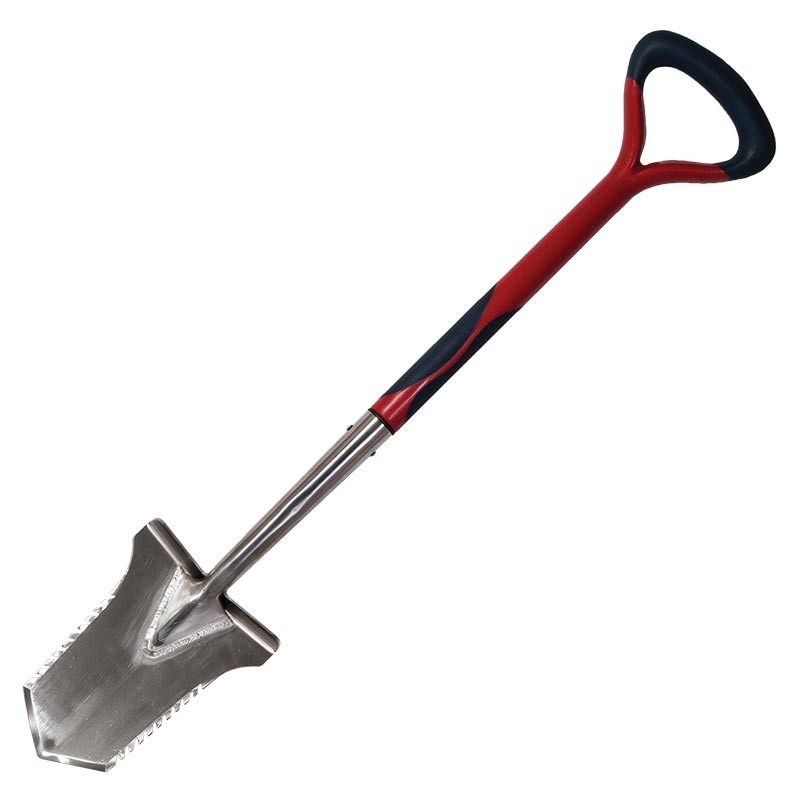
The Evolution Pro Cut
The ultimate accessary for the serious metal detectorist. Super strong, stainless steel specially designed spade.
You can however get the power of this technology at a much lower cost with Minelab’s Vanquish range which consists of the entry level 340, the 440 and the 540.
The Vanquish 340 can give you simultaneously operating 5 frequencies for well under £250 which is incredible in my mind!
It’s only now in 2021 that because the Minelab patent has expired that other manufacturers are copying this technology but remember, they didn’t pioneer it….Minelab did!
Garrett have their multi frequency offering and I compare the Garrett Ace Apex vs Minelab Vanquish 540 here.
You can read my dedicated article on the Minelab Vanquish series here.
How do multi frequency metal detectors works?
Minelab call their simultaneous multi frequency technology “Multi-IQ”. You have the combined power of several detectors all in one detector that works all at the same time.
Because of the way it works, even the most difficult mineralised ground, and salty wet beaches are handled with ease.
Targets can be detected at greater depths and more importantly, the deeper targets have more accurate and stable signatures due to the increased information coming from all of the frequencies.
Minelab spent a great deal of time and money on research and development so even the preset modes and search patterns are the best place to start.
Because different metals react better to certain frequencies, choosing the best single frequency was always a challenge.
Because Multi-IQ uses several frequencies, all metals are subjected to the frequencies that make them react best. This means you never worry about what you might of missed because you’re not using the best frequency.

Most popular metal detectors
Okay, we’ve looked at all of the benefits of multi frequency detectors over single frequency detectors.
To a certain extent, within detector manufacturing, it’s sent shock waves because with the cost of a entry level multi frequency detector from Minelab starting at well under £250, it has almost rendered similarly priced single frequency machines obsolete.
Personally, I can’t see any reason to purchase a single frequency machine anymore. In my mind, even an entry level multi frequency machine will out perform a high end single frequency machine.
A multi frequency machine might well be the machine you will never have to upgrade to!
So what choices do you have? I personally am a Minelab person through and through. Their machines are quality and their Research and Development is second to none.
They did after all invent and pioneer true multi frequency technology and are always at the leading edge.
Another massive advantage over single frequency machines is the ability of a multi frequency machine being able to handle salty wet beaches with ease.
You can read my article on beach metal detecting along with some top tips here.
Minelab Vanquish 340
What’s great:
5 Simultaneous Multi Frequencies (5, 10, 15, 20 & 40 KHz)
3 Search modes – Coin, Jewellery & All Metal
3 Target tones – Low, Mid & High tone
4 Sensitivity levels
What could be better:
More user adjustability but that increases up the range
The Minelab Vanquish 340 is the entry level machine in the Vanquish range which consists of the 340, 440 and 540. The amount of adjustability and bells or whistles increases as you climb the range.
Don’t let the fact that it’s the entry level model make you think that it’s a compromise.
This machine uses the Multi-IQ system which incorporates all 5 frequencies as it does in the flagship Equinox 800.
This machine will blow most, if not all single frequency machines out of the water for an incredibly low price taking into account of the advanced technology.
Even with the entry level adjustability, you get 3 volume settings, 3 search modes, 4 sensitivity levels and 3 target tones.
On top of that, you get automatic noise cancelling on start up which basically checks your surroundings for any possible interference and chooses the quietest channel for you.
The Coin search mode gives you most discrimination in high trash areas. The Jewellery mode just discriminates iron so you accept coins and jewellery and there is also an All Metal mode.
It comes with a great 10×7 Double D coil as standard so target separation is tip top, ground coverage is maximised and it handles difficult ground with ease.
Additional bigger and smaller coils are available also. You can find the Minelab Vanquish 340 user manual here.
You will not find a bigger hitter for the money and you will not be disappointed!
Note: The additional features on the next models include – 10 levels of Sensitivity adjustment for fine tuning, 10 levels of volume control, 10 levels of volume control on the iron tone so you can turn it down in busy areas and 5 audio tones.
The 540 only has Bluetooth capability for wireless headphones. Find the Vanquish 440 here and the Vanquish 540 here.
Minelab Equinox 800/900
What’s great:
Full Multi-IQ, 5 frequency technology
Fast & Accurate target identification
Wireless low latency audio with headphones included
Incredible user adjustability
What could be better:
A coil with no cable that’s bluetooth but it’s minor
Having owned my Equinox 800 for a few years now, I can honestly say that it was a game changer in the detecting community. There currently are some great deals on these machines which some people cannot part with.
The Equinox 800 has surprised me time and time again with its ability to sniff out the smallest of targets and at some considerable depths also. It’s only due to the Manticore that I’ve retired it.
What never ceases to amaze me with this machine is the fact that it doesn’t seem to struggle with target identification even as the targets get deeper.
Target ID’s just seem to stay rock solid and it just seems to know what it is and locks on.
The adjustability is good for me as I’ve done a lot of target testing and finds recording in the field so I’ve adjusted my discrimination pattern slightly and adjusted my tone breaks to how I like to hunt.
That’s the big thing with this machine. It’s totally adjustable to how you want to hunt but the preset patterns are already pretty spot on to be fair…..you won’t miss much!
You can find the Minelab Equinox user manual here.
If you’re in the market for a top end machine, you will not find a better machine than this and I can claim that because I have one!
Final thoughts
We’ve covered quite a bit in this article and I can say that I’ve really enjoyed writing it because I feel so passionate about metal detecting and ensuring that potential new detectorists make informed choices.
We’ve talked about how detectors work and how detector frequencies work on specific metals.
We’ve covered the shortcomings of single frequency machines and the advantages of multi frequency machines. Be wary of manufacturers claiming multi frequency technology but in fact it’s manually switched.
What you need to look for is “simultaneous” multi frequency. This means they will all work for you at the same time.
Got time?….why not read my article on how to carry out metal detecting research on your beach to find the hot spots here!
Stay safe and happy hunting!

Ultimate Tactical Packs!
Carry everything you’ll need for a detecting day like a First Aid kit, detector spares, finds boxes, batteries, snacks and drinks to rehydrate.
Never forget anything again with a belt pack!



